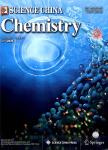Study of the effect of atorvastatin on the interaction between ICAM-1 and CD11b by live-cell single-molecule force spectroscopy
Study of the effect of atorvastatin on the interaction between ICAM-1 and CD11b by live-cell single-molecule force spectroscopy作者机构:Department of Cardiology the General Hospital of Chinese People’s Armed Police Forces Beijing China Beijing National Laboratory for Molecular Sciences Chinese Academy of Sciences Beijing China Institute of Chemistry Chinese Academy of Sciences Beijing China State Key Laboratory of Pathogen and Biosecurity Beijing China Beijing Institute of Microbiology and Epidemiology Beijing China
出 版 物:《Science China Chemistry》 (中国科学(化学英文版))
年 卷 期:2010年第53卷第4期
页 面:752-758页
核心收录:
学科分类:1007[医学-药学(可授医学、理学学位)] 1006[医学-中西医结合] 100706[医学-药理学] 100602[医学-中西医结合临床] 10[医学]
基 金:support from the National Natural Science Foundation of China (Grant Nos. 90713024 & 20821003) the Major State Basic Research Development Program of China (Grant No. 2007CB935601)
主 题:atherosclerosis atorvastatin atomic force microscopy single-molecule force spectroscopy protein-protein interaction
摘 要:The interaction between the cell adhesion molecule CD11b and its ligand ICAM-1 plays an important role in inflammatory responses in the disease of atherosclerosis. Atorvastatin is a commonly prescribed statin drug which has been considered as one of the most potent therapeutic agents for atherosclerosis due to its lipid-lowering effect. Recently, there is a growing body of evidence that atorvastatin has anti-inflammatory effect. We have applied the advanced method of live-cell single-molecule force spectroscopy to investigate the effect of atorvastatin on adhesion force between ICAM-1 and CD11b. Our result showed that single-molecule binding force of ICAM-1 and CD11b detected by AFM in the living cells was about 40 pN, and atorvastatin did not affect this force by blocking ICAM-1 or CD11b. This was different from the ICAM-1 monoclonal antibody, which could directly reduce the binding force of ICAM-1 and CD11b. Flow cytometry results revealed that atorvastatin pretreatment decreased the ICAM-1 expression in TNF-α activated HUVECs, which may contribute to its anti-inflammatory effect. The study provides a new approach to study anti-inflammatory mechanism for clinic drugs.



